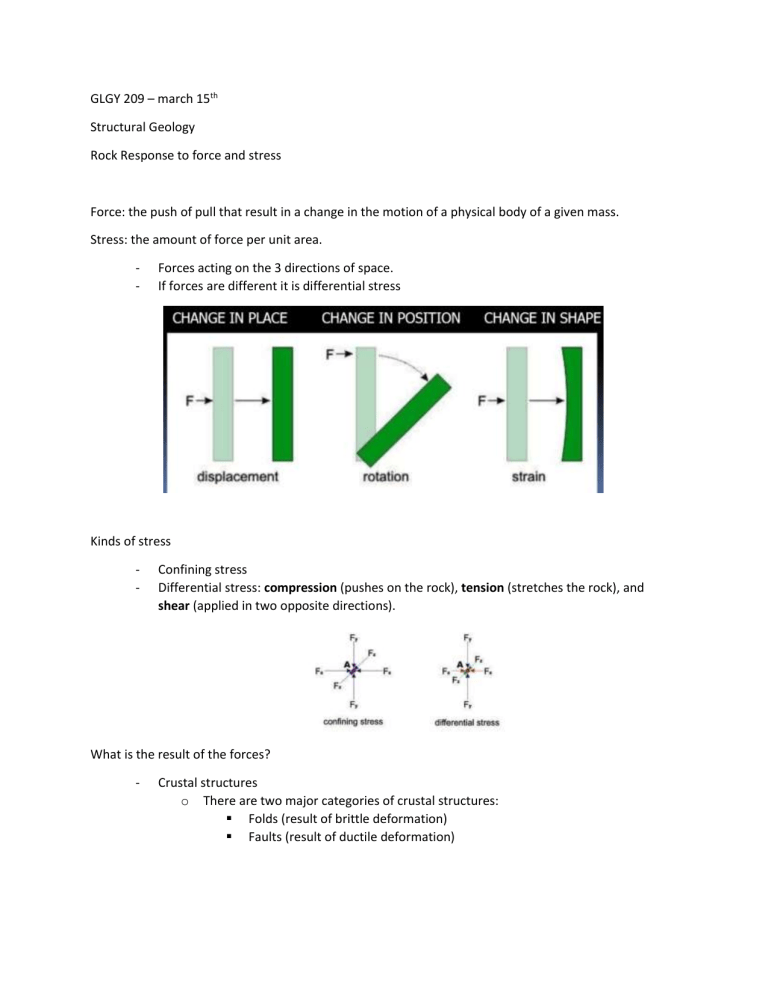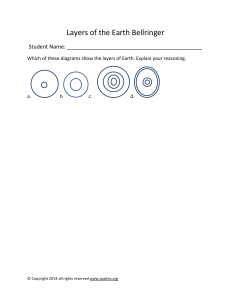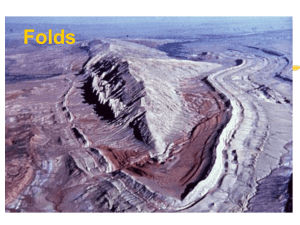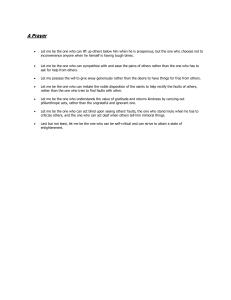
GLGY 209 – march 15th Structural Geology Rock Response to force and stress Force: the push of pull that result in a change in the motion of a physical body of a given mass. Stress: the amount of force per unit area. - Forces acting on the 3 directions of space. If forces are different it is differential stress Kinds of stress - Confining stress Differential stress: compression (pushes on the rock), tension (stretches the rock), and shear (applied in two opposite directions). What is the result of the forces? - Crustal structures o There are two major categories of crustal structures: Folds (result of brittle deformation) Faults (result of ductile deformation) o Their formation depends of how the layers of rocks behave to the applied force. Folds - Rocks don’t break frequently, create a wavy layered appearance How do folds form? - Applied force of two plates colliding, magma chamber raising to surface Difficult to see folds in nature; vast structures with eroded layers 3 types of folds: - - Anticlines o Two branches or links converge upwards Synclines o Two branches converge downwards o Like Lake Louise Monoclines o Simply tilted layer o Occurs from two very weak forms of compression Deformation is extremely strong Horizontal hinge is perpendicular to surface Plunging hinge is at angle Anticline - 0- 90 degrees Classification of the limb and axial plane position with respect to the horizontal plane Axial plane perpendicular to the surface o Upright Axial plane angled o Inclined Limbs go in same direction o Overturned Axial plane almost parallel to ground o Recumbent Synclines - 90 – 180 degrees - No movements -> joints Movements -> faults Rocks break frequently Faults Vertical faults: dip sip faults F=fault itself > Principles of Stratigraphy - Around 1580 -> first attempt to calculate age of the earth o Irish Bishop calculated the biblical record Age of the earth a few thousand years (false) Nicholaus steno 1. 2. 3. 4. Tuscany has two distinct layers (lower and upper) o Separated by the discontinuity How were the layers formed? o 4 principles Principle of superposition o In a succession of layers, the oldest layer is base and younger layers Principle of successive layer formation o The formation of a layer was a long process. o Therefore, an organism that died under burial, could decay Principle of original layer horizontality o At a time of layer formation, it was completely horizontal, after pressures it transformed to layers we know (folding, faults) Principle of original layered Continuity o Layer formed on entire surface of a basin (not true) Interpreting a stratigraphical succession - Sedimentological data can be used to decipher the order of deposition of various sedimentary strata. Particular structures such as desiccation cracks (mud cracks), and ripple marks are of great value in recognizing the original position of the sea bottom.




